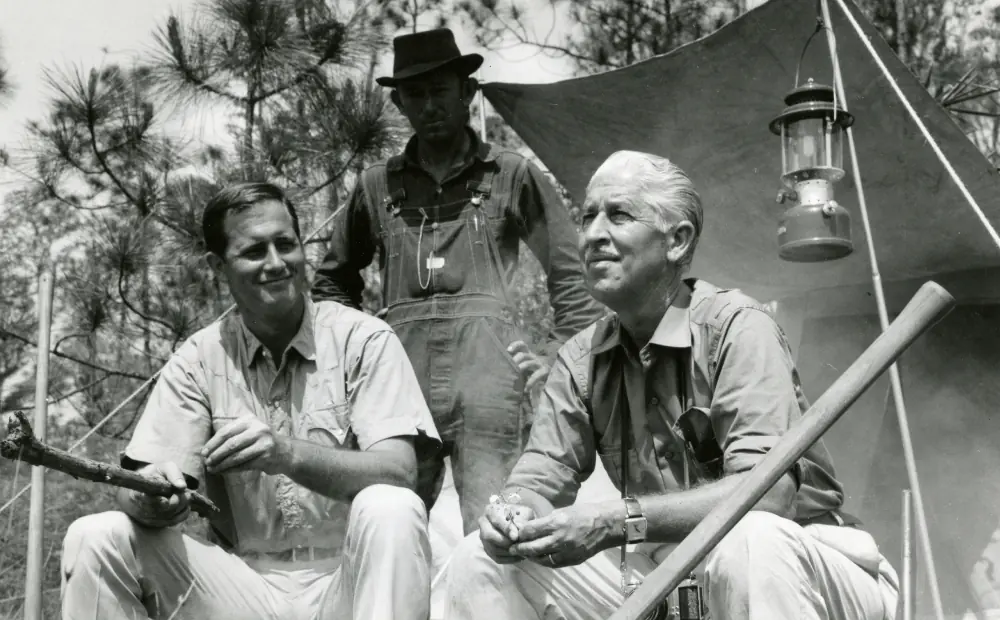0:04
Every wild animal deserves our stewardship.
0:07
From the endangered golden lion tamarind to the threatened American bison, many iconic animal species have captured our imaginations.
0:16
Their conservation stories symbolize our responsibility to protect the wild places and animals of the world, and today we're highlighting a few of our favorites.
0:29
Sea turtles are one of the most beloved animals on Earth.
0:33
These long distance swimmers migrate thousands of miles across the world's oceans.
0:38
Thanks to global cooperation and awareness, sea turtles are protected, but all 7 species are threatened and some are critically endangered.
0:48
Turtles a conservation because they are threatened by pollution, they're threatened by climate change, they're also threatened by fishing and bycatch.
0:59
Today, I'm in the Bahamas to take part in a sea turtle conservation project.
1:07
Kristen, this is really cool.
1:08
All these sea turtles behind us.
1:10
Can you tell me what is going on right here?
1:13
They're between three and four years old.
1:15
So we've had them for that period of time with the intention of releasing them back into the wild.
1:19
How many have been released so far?
1:21
I want to stay over 7,000.
1:24
So somewhere around that.
1:25
Yeah.
1:25
Oh, my gosh.
1:26
You guys must be really proud of that.
1:28
We are.
1:29
We want to give back to the environment.
1:30
You know, we're here.
1:31
We're benefiting from it, and we want to be able to contribute to that.
1:34
So we we take joy and giving back.
1:38
The conservation staff chose a suitable candidate for release.
1:41
Hi.
1:42
I think this one's ready to go explore the ocean.
1:46
What do you say, bud?
1:48
All right, right in here.
1:50
Here we go, buddy.
1:52
Then we brought the young green sea turtle to the resort's fish hospital.
1:56
I'll help on the side.
1:58
OK.
1:59
This is exactly 40 centimeters.
2:02
Nice.
2:03
Recorded its measurements and weight.
2:07
Precious cargo right here.
2:09
Got it.
2:09
Got it.
2:12
And drove out along the coast, 20 minutes away from Atlantis.
2:17
The release site is full of lush seagrass beds.
2:20
A perfect grazing area for this endangered turtle species.
2:25
Your moment.
2:25
Here we go And just let it.
2:28
Let it go.
2:29
Yeah, just let it go a moment.
2:31
Bye.
2:32
This green sea turtle descending gently into its new home is living proof of the conservation work being done by Kristen and the team at Atlantis.
2:46
Yeah, awesome.
2:54
Sea turtles are ancient and iconic animals that must be protected.
2:59
Their species struggle for survival has come to represent the fate of Wildlife Conservation itself.
3:10
The mighty polar bear is a conservation icon that's become an ambassador for all forms of wildlife and for the larger cause of environmental protection.
3:20
I'm at the Columbus Zoo and Aquarium to study polar bears and learn about the challenges they face in the wild.
3:28
This is an incredible habitat.
3:29
Yeah.
3:30
I can't imagine anybody having been in the water before having polar bears swimming over their heads.
3:36
Yeah, there are two polar bears here at the Columbus Zoo, a female named Aurora and Lee swimming above me.
3:44
What is he doing?
3:44
Most people picture polar bears on the top of the ice.
3:48
They are super good swimmers.
3:50
Lee is our male.
3:51
He is actually diving for his favorite treat which is yogurt covered raisins.
3:57
Wild polar bears live in Arctic regions like Canada, Alaska, Russia, Greenland and Norway.
4:03
They spend most of their time on sea ice that floats on the surface of polar oceans and seas.
4:12
They are uniquely adapted to be able to live on the ice and swim in the Arctic Ocean.
4:16
Their paws and their paw pads are basically paddles.
4:21
They're giant.
4:22
They have a lot of surface area, they're webbed, and although they are great swimmers, they're not built for marathon distance swimming.
4:30
They are not seals, they're bears.
4:32
The changing of the sea ice when it forms, how much ice is forming, is making them have to swim super long distances to find food.
4:43
Polar bears are expert predators.
4:45
They rely on a technique called still hunting to ambush their primary prey, ring seals.
4:52
They lie in wait near the seals, breathing holes, ready to strike when a seal surfaces for a breath of air.
5:00
But heat trapping gases such as methane and carbon dioxide released by burning fossil fuels have warmed the Arctic by almost 6°F and rising more often than not.
5:12
The sea ice is now forming later and melting earlier.
5:16
Climate change is shrinking the bears icy hunting grounds and threatening their very survival.
5:23
Warmer climates, less ice, shorter hunting season.
5:26
Yeah, it takes a lot of energy to be a polar bear.
5:30
To survive in the Arctic.
5:31
You need to have a really thick layer of fat on your body.
5:35
So their biggest threat is climate change, and they really depend on that ice.
5:40
The growing climate threats confronting polar bears affect all of us as well.
5:45
These iconic creatures speak to us with a powerful voice, a cry for protection and stewardship for our Wild Kingdom.












